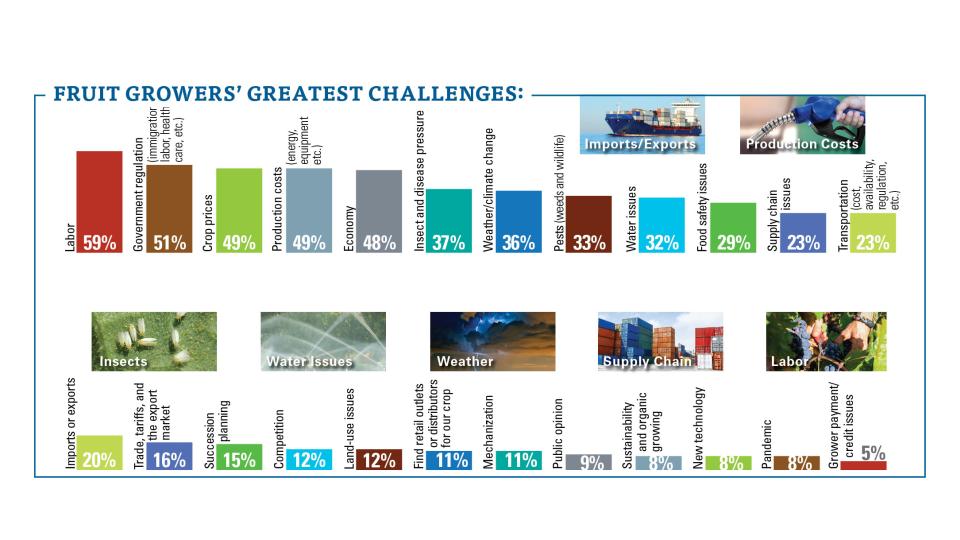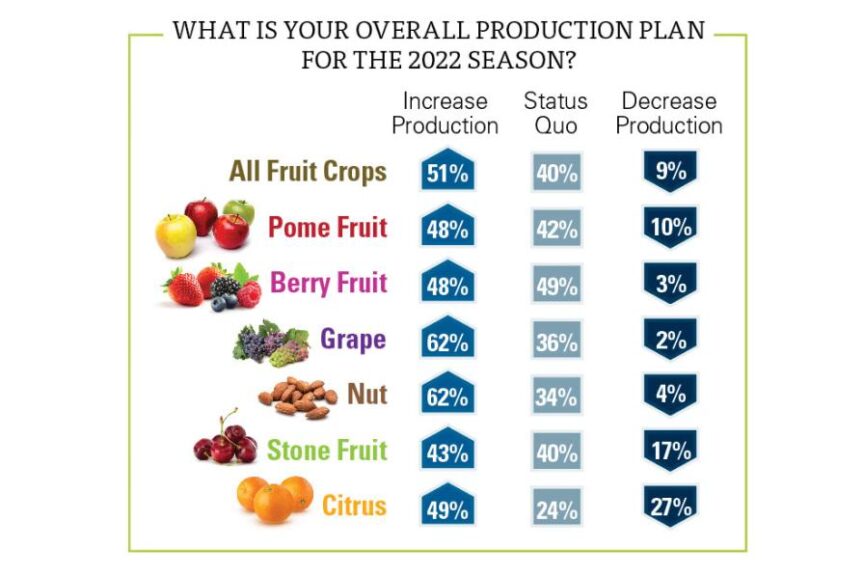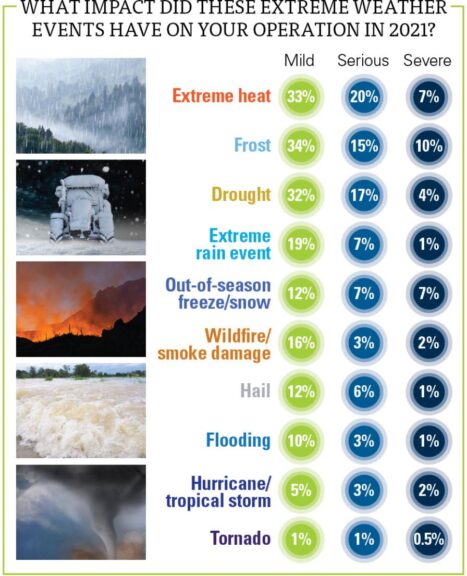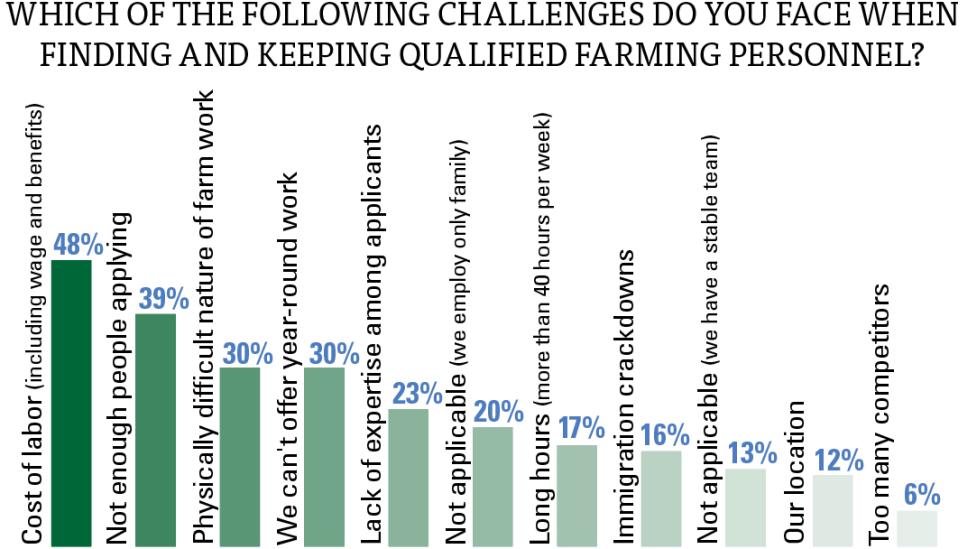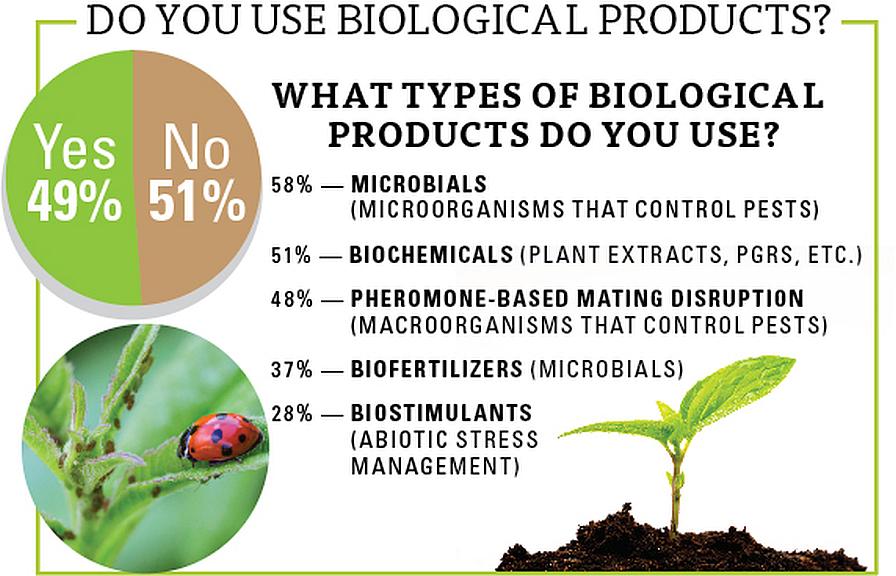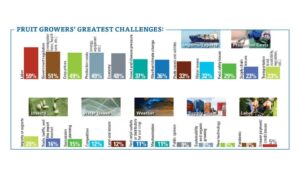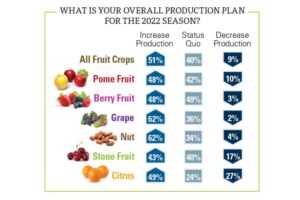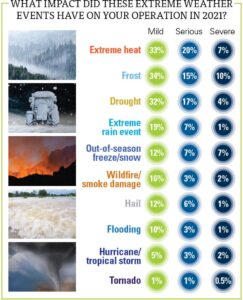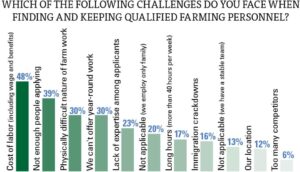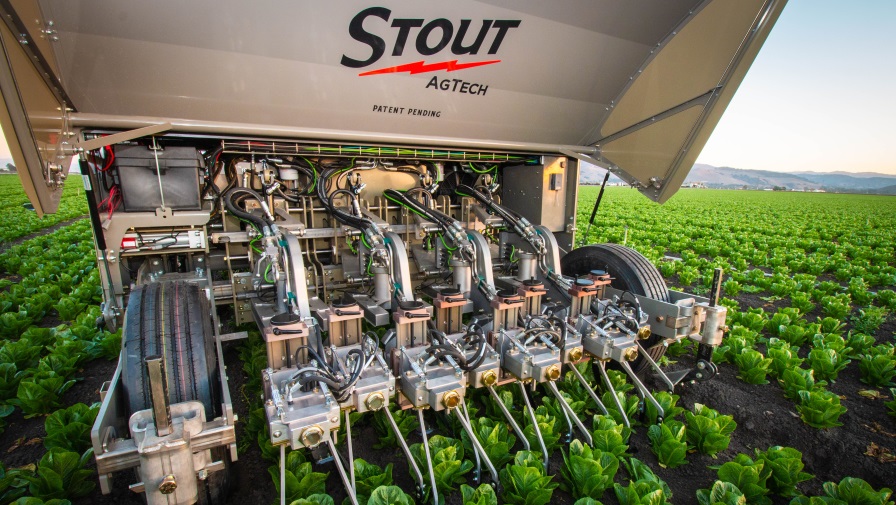How American Fruit Growers Are Taking on a Tsunami of Challenges This Year
The optimism of American fruit growers should never be underestimated. The headaches growers are bearing, many of them caused by the COVID-19 pandemic, have been well chronicled: supply chain problems, rising and fertilizer prices, not to mention the shipping fiasco that is causing billions of dollars in losses for large growers dependent on exporting their crops. It makes the confidence revealed in American Fruit Grower’s seventh-annual State of the Industry survey all the more surprising.
Scroll the gallery above for some interesting takeaways from this year’s State of the Fruit and Nut Industry survey.
A majority of all fruit growers — 51% — plans to increase production of their primary crop. Another 40%, at worse, are going to maintain their production level from the previous year. Only 9% indicate they are decreasing production.
It should be noted many growers responding to our survey are smaller growers, which is to be expected, as most growers in the U.S. farm fewer than 100 acres. Nearly two-thirds of the growers answering the survey fall into that category. Though of the more than 500 growers who responded this year, 16% farm more than 500 acres, and 5% 2,500-plus acres.
But only a fool would say conditions are terrific, and many growers are obviously having to ride the wave of oncoming problems facing all of us. For the agriculture community in particular, increasing labor shortages, rising inflation, supply chain disruptions, , and increasing regulation are daunting. How are growers adjusting to the current state of affairs as they proceed into their growing seasons?
“We’re planning further in advance so we can order new equipment and inputs with enough lead time,” a Pennsylvania tree fruit grower says. “We’ll have to raise the price of our products to cover the added costs we are paying for inputs.”
“Given the small scale of my operation, price increases have been manageable,” an Oregon tree fruit grower says. “I’ve largely shifted away from tools and equipment that use fossil fuels, so those price increases have had negligible impact. I expect that there will be price increases for certain inputs.”
“We are trying to make sure we are doing everything as efficiently as possible,” an Indiana grower of pome fruit says. “We are spending money on technology and equipment in order to reduce inputs where possible. We are fortunate to be primarily direct marketers, so we are well positioned to handle these challenges by increasing our prices and explaining to our customer base how scarcity and inflation are affecting the industry.”
Still other growers say they have yet to be affected.
“It’s not a problem. I always sell almost all my grapes,” a Florida muscadine grower says.
“The effects are not huge,” a Texas wine grape grower adds.
Other growers, while in agreement, are waiting for the other shoe to drop.
“It’s no problem yet, but I expect it to worsen,” a California citrus grower says.
“I have not changed much. We’re hoping to get better, we shall see,” a lemon grower from California adds. “We are optimistic, but I feel the situation shall get worse.”
Until then, “we expect to adjust AFTER this season,” a Florida tropical fruit grower says.
Pondering Price Hikes
How to adjust is the question on the minds of many growers. They voice their options in the survey while answering the following questions: How have rising prices and shortages of crop inputs affected your operation? How have you adapted?
In many of the 323 responses to these open-ended questions, the answer turns to raising prices on their own crops and services.
“I have to raise my prices. It’s all I can do,” a Kansas tree fruit grower says. “We already try to be efficient with resources and labor, but we can’t avoid inputs like packing material increases. The situation might plateau. Fertilizer and diesel will eventually go down, but boxes and bags won’t.”
“We are increasing retail prices this year across the board,” a New Jersey apple grower says. “Shipping was very slow last year, and we are ordering much earlier to ensure supplies are on hand when we need them. Yes, I expect the situation to worsen, especially inflationary pressure and shipping delays.”
For a grape grower in Washington state, raising his prices is not an option. “You cannot pass on rising input costs to customers,” he says. “We’re negating our margins completely.”
But for a counterpart in Connecticut, the rising prices are simply squeezing margins too much. “Concern for supply shortages causes us to order more items for the season, rather than two- to three-week needs, which affects our cash flow,” he says. “Right now, there is no letup in price increases. We will be raising our prices and getting as much as we can, but will it be enough?”
Yet another fair question in the midst of uncertainty.
More Recommendations
Do not skimp on inputs, endorses a New York tree fruit grower. “Take care of the crop 100% or do not do it at all.”
“You can’t ‘adapt,'” a Michigan grape grower says. “You still have to spray water and mow.” If push comes to shove, he adds, “borrow money to get by for now.”
Practicality is highly touted.
“We’re trying to adapt by using less,” a Louisiana pecan grower says. “We’re also encouraging clover for nitrogen.”
“Take greater care on how inputs are applied,” a California almond grower says.
“I have found alternatives to ‘not available,'” a Nebraska pome fruit and berry grower says, “but nothing is cheap.”
“I removed some acreage and am redeveloping to more productive vineyard,” a California wine grape grower says.
“Hopefully, fruit prices will increase accordingly,” a Colorado tree fruit grower concludes.
Several growers recommend grinning and bearing it.
“All inputs are going up,” a Georgia nut grower says. “You don’t adapt. You just pay what they say.”
“Accept them and look for ways to do things differently,” a North Carolina muscadine grower says.
“We have to tighten our belt and get more creative,” a Massachusetts tree fruit grower adds.
Other grower tips are a bit more lighthearted.
“We’re going back to our roots — spreading manure as we always should have been doing,” a Montana stone fruit grower says.
Thank You to the Sponsor
 American Fruit Grower thanks UPL OpenAg for its sponsorship of this seventh-annual State of the Industry report. UPL is a leader in global food systems, aiming to transform agriculture through OpenAg, a network that feeds sustainable growth for all.
American Fruit Grower thanks UPL OpenAg for its sponsorship of this seventh-annual State of the Industry report. UPL is a leader in global food systems, aiming to transform agriculture through OpenAg, a network that feeds sustainable growth for all.





